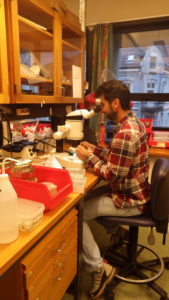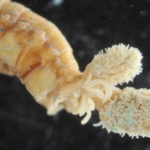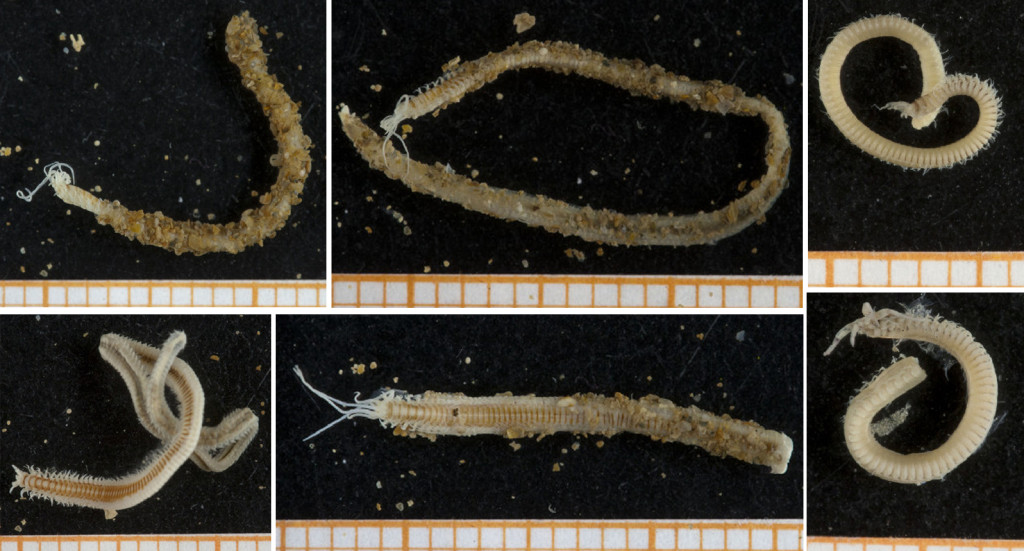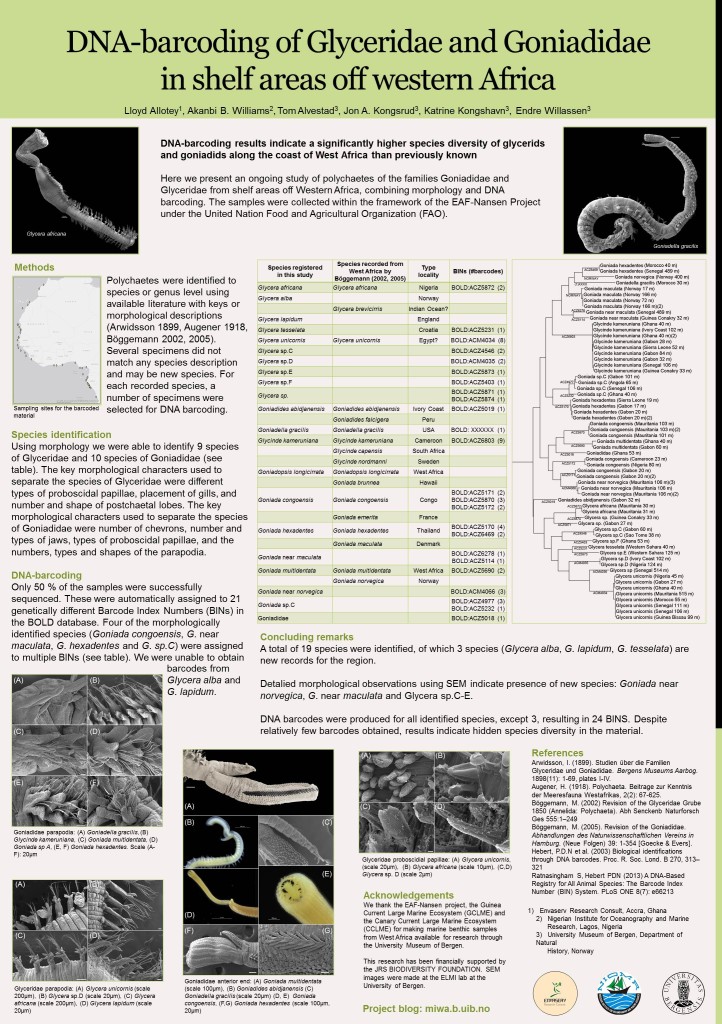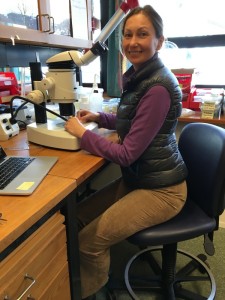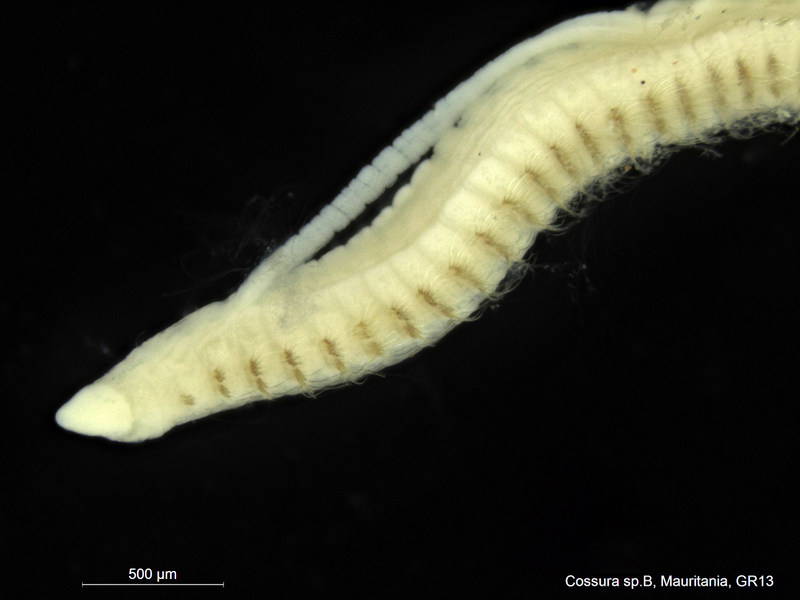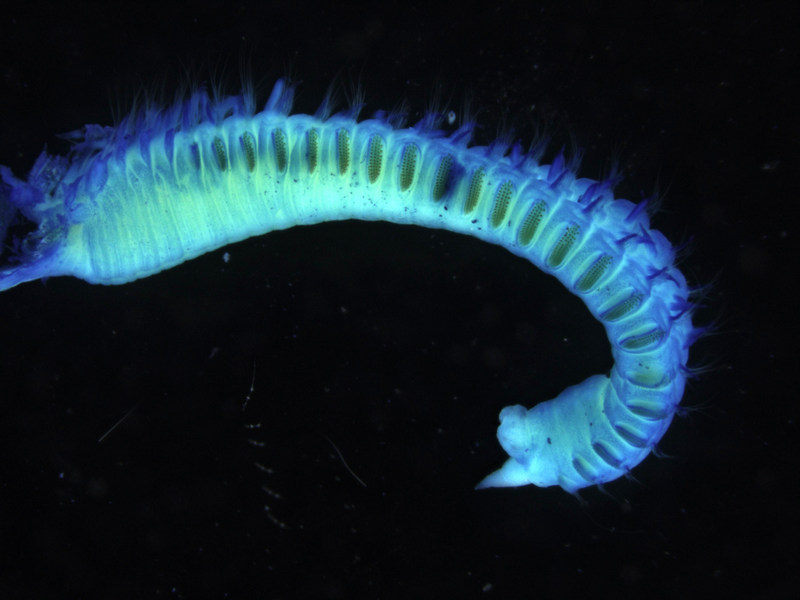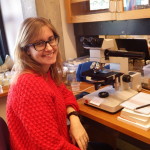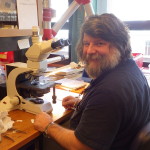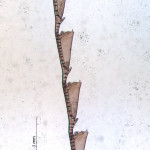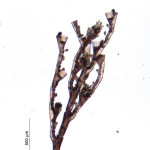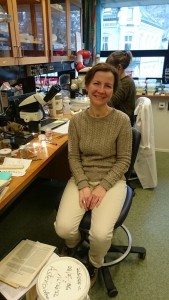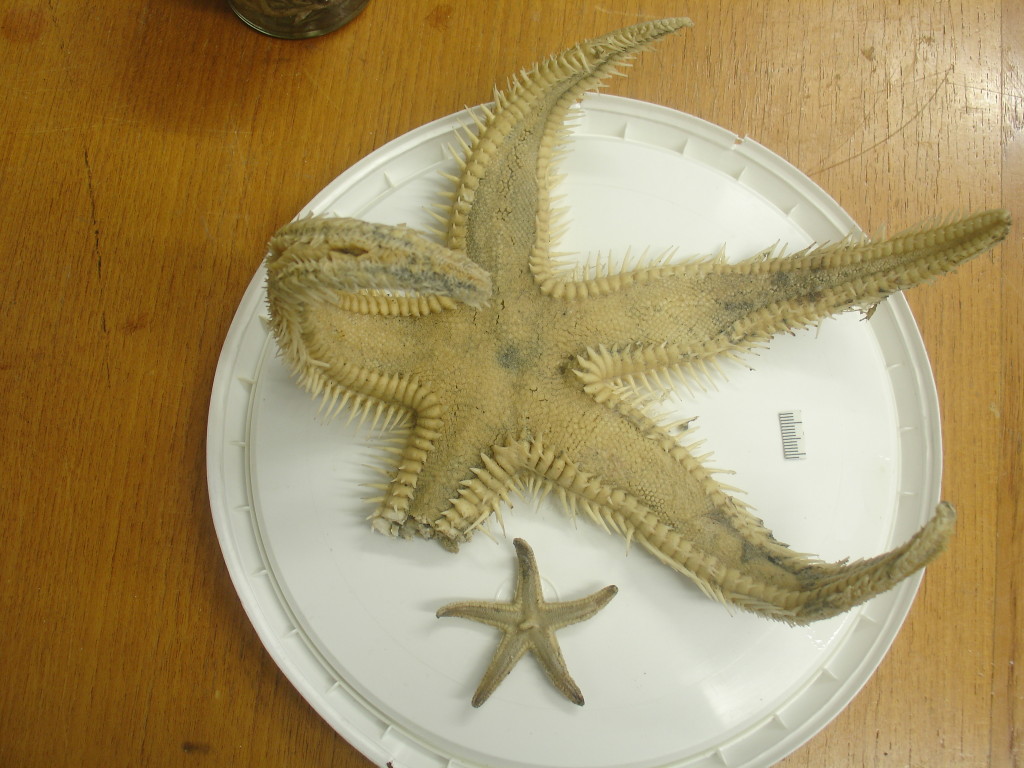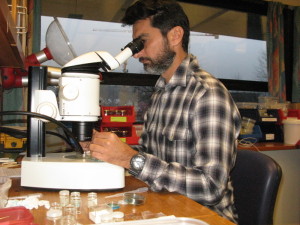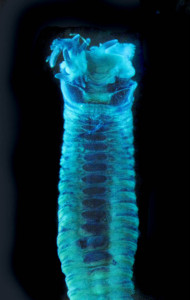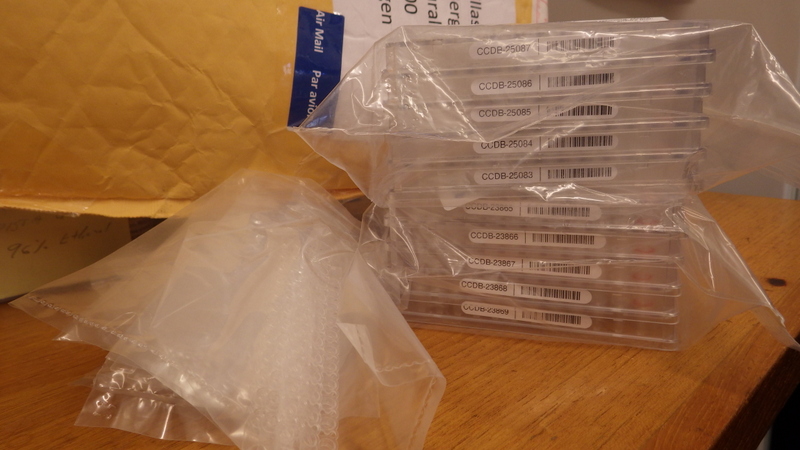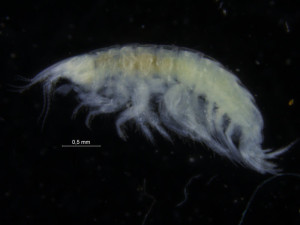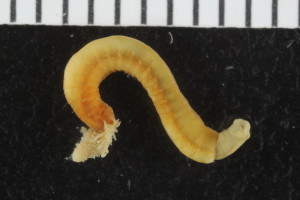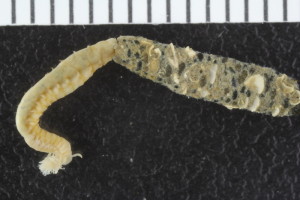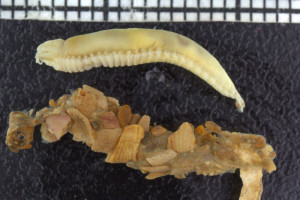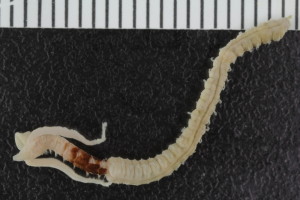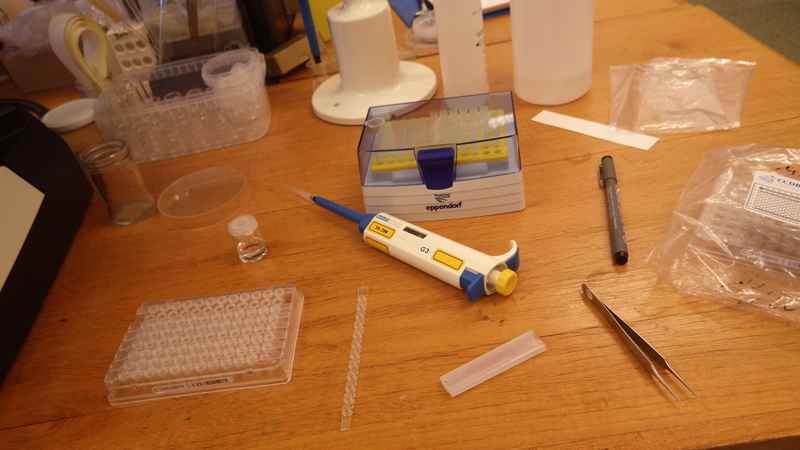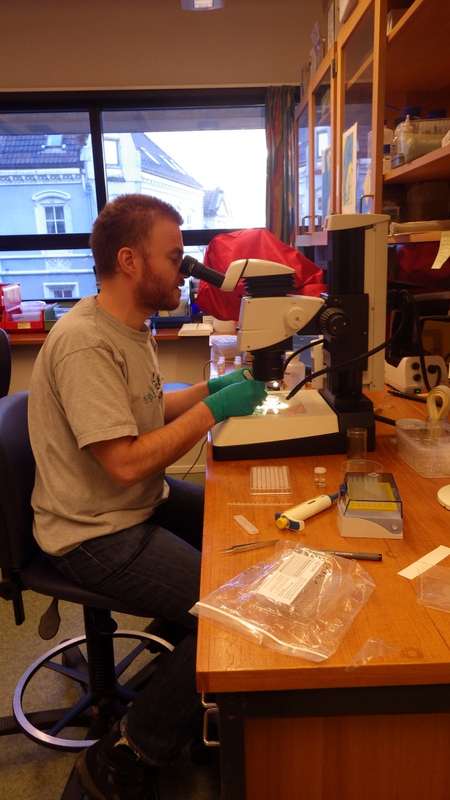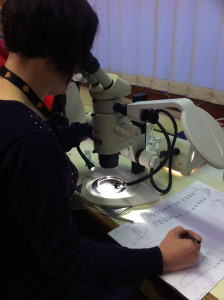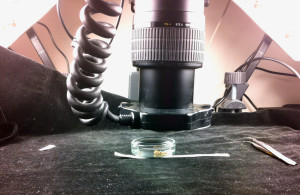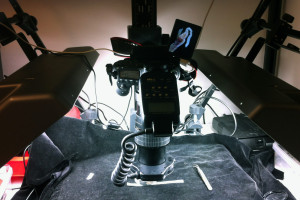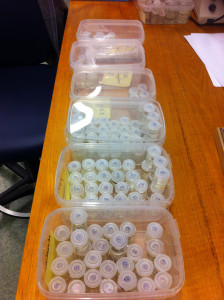We are running a calendar count down from the 1st to the 24th of December on our collections blog, and MIWA is frequently featured!
Category Archives: Guests
Guest researcher: Mario
Mario (who also visited us in January) came back to continue his work on the Terebellids and Pista (polychaeta) in October. In his own words: This time, I take to my home two papers close to completion; one about species of the genus Pista (Terebellidae) with additional information to what I found during my last visit in January. The second paper is about species in the subfamily Polycirrinae (Terebellide) from the West coast of Africa.
The idea is combine drawings, digital photos of specimens with methyl-green staining pattern and SEM pictures, as well as molecular information that will hopefully help us separate species and make better estimates of the region’s biodiversity.
You can read more about Mario’s visit in our Invertebrate Advent Calendar, which is running from December 1-24th on our collections blog. Click here to find all the calendar posts!
Guest researchers: Andres
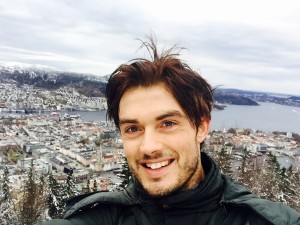 We recently had Andrés Arias from the University of Oviedo, Spain, visiting our lab to work on the MIWA-material, and asked him to share a little about his work. In his own words:
We recently had Andrés Arias from the University of Oviedo, Spain, visiting our lab to work on the MIWA-material, and asked him to share a little about his work. In his own words:
During my visit to the Bergen Museum I studied two genera of onuphid polychaetes, Onuphis and Mooreonuphis collected by the MIWA Project in West Africa.
The taxonomy of eastern Atlantic species of the genus Onuphis has been confused due to the somewhat cursory and misleading descriptions of species as well as the disregard of the true identity of the type species of the genus. Recently this confusion began to clear as a result of more detailed morphological studies and the formal redescription of the controversial type species, O. eremita. I have been working on European and Mediterranean Onuphis as well as intertidal/shallow subtidal Onuphis spp. and Mooreonuphis spp. from West Africa and the Macaronesian archipelagos.
Now, I’ve had the great opportunity to start working on deeper samples of Onuphis and Mooreonuphis from W. Africa. The study of this material is very exciting and promises to be very interesting since in a first approximation we have found at least six species that are new to science! This will contribute to updating the list of bristle worms from West Africa. This information will fill spatial gaps for the genera Onuphis and Mooreonuphis, in a region where little information is available, which is undoubtedly needed!
I would like to thank everybody at the Museum for their kindness and help, which made my stay very pleasant!
Thank you for visiting, and for contributing to the blog!
New knowledge on the Glyceriformia through an integrated approach
Integrating morphological studies with DNA barcoding is indicating significantly higher species diversity than previously known in the polychaete families Goniadidae and Glyceridae (Glyceriformia) from the Western coast of Africa.
Our multi-toothed acquaintance from a previous blog post makes an appearance here, together with a multitude of other species. The animals were initially identified to species or genus level using available literature with keys or morphological descriptions. Several specimens did not match any species description and may be new species.
For each recorded species, a number of specimens were selected for DNA barcoding and uploaded into the BOLD database. You can read more about how this work was carried out in this blog post from when guest researchers Lloyd and Williams visited in November 2015.
Our preliminary findings were presented as a poster at the 12th International Polychaete Conference in Cardiff, Wales during the first week of August. You can read about the University Museums attendance here. Next we are hoping to invite one of the taxonomic experts on the group to come visit and work on the material – there is certainly a lot to be done!
Guest researcher: Anna Zhadan
We recently had a visitor, Anna, from the White Sea Biological Station staying here for two weeks. In Anna’s own words:
I have been studying polychaetes for about 20 years, starting with taxonomic studies of cryptic Orbiniid species in the White and Barents Sea. Later, I switched to polychaete anatomy and ultrastucture, and recently returned to faunistic and taxonomical investigations supported by the molecular methods.
During this visit to Bergen Museum I studied two families – the Orbiniidae and Cossuridae – from the Northern and equatorial part of the West Africa. The representatives of these families have poor morphology with paucity of useful for identification characters.
The descriptions of most of species are quite old, which means that they are too short and general, and can fit for several similar species. That’s why molecular investigations will be extremely helpful to distinguish close species here. I could recognize 15 and 3 putative species in Orbiniidae and Cossuridae respectively. After getting barcoding results I will investigate them again in Russia to make detailed redescriptions of previously known species and, most probably, descriptions of species new to science.
It will be exciting to see how many of putative species will be confirmed by barcoding!
I want to thank everybody at the Museum for their friendship and help in making my stay so pleasant. And I was absolutely fascinated by beauty and charm of Bergen – its landscapes and architecture, history and culture, and of course people.
Anna Zhadan,
N.A.Pertsov White Sea Biological Station,
Biological faculty, M.V. Lomonosov
Moscow State University,
Russia
Guest Researchers: Marta
For the past month Marta Gil, a PhD student from the University of Vigo, has been with us for her second stay at the University Museum of Bergen. Marta has continued with the study of West African hydroid fauna from the MIWA-project, which was begun when she first visited here together with her supervisor, Professor Francesco Ramil Blanco (Fran) in July 2015.
- Marta
- Fran
- A. latecarinata
- S. caboverdiensis
- P. setacea
Marta has worked with samples collected during several Dr. Fridtjof Nansen surveys. Most of the samples were collected with an epibentic sledge, a sampling device more efficient for small colonies of hydroids. This study provide complementary data to those obtained during the study of hydroid fauna collected with the bottom trawl by the Norwegian and Spanish African surveys, and has allowed her to obtain some little know or even undescribed species.
Their findings are also interesting in terms of biogeography: Moroccon and Mauritanian hydroids show a strong affinity with Atlantic-Mediterranean fauna, whereas those from Guinea Bissau and Guinea Conakry waters show more similarities with tropical fauna. This means that for hydroids, the boundary between the temperate Lusitanian and the warm tropical fauna is located somewhere along the Senegalese or Guinea Bissauan coast. We hope that the complete analysis of data will enhance our knowledge on the marine fauna of this fascinating region.
Guest researcher: Anna
We recently had a visitor here, Anna, who was working on the Asteroidea – the sea stars – collected through MIWA. In her own words:
I am a specialist in asteroids from the P.P. Shirshov Institute of Oceanology, Russian Academy of Sciences. Although I mostly work on the deep-sea star fishes from the northern regions, I was very interested in examination of the shallow water fauna off the Western Africa.
I have examined more than 150 specimens of sea stars during a two-week stay. As a result, I have identified about 22 species belonging to 13 genera. The most diverse and abundant genus it this collection was Astropecten that included very different species, from small to enormous ones.
I had a very successful work in Bergen, which was very interesting and useful for me as a taxonomist!
Thank you for the visit and the blog post, Anna!
The next step for us will be to try to do some DNA barcoding on the material she has identified.
Guest researchers: Mario
Mario, whose home institution is the University of Antioquia, in Medellin, Colombia, arrived here in the beginning of January.
During Mario’s month-long stay he was examining the collection of terebellids from West Africa and the museum’s collection of the bristle worm genus Pista, much of which will later be barcoded though NorBOL (for the Norwegian material) and MIWA (for our West African samples).
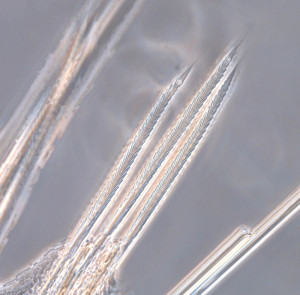
Verticilate chaetae from one of the polycirrinae species photographed through a microscope (photo: MHL)
In his own words:
I usually work on the morphology of just one of the several families of polychaetes, the spaghetti worms or Terebellidae. This visit has been very important since we have been able to separate four Pista species from the North Sea, using both morphological and molecular tools. “The combination of these two different methods has been superb”.
Jon, Arne and I began this study during August 2014, but this never will end because we are continuing with more material. The recent findings have been the significance of some characters that did not have taxonomical importance in the past. Now, they are the clue for splitting very close species.
But this is not enough; it was possible to identified 43 species of terebellids belonging to 16 different genera, from material collected in West Africa coasts. This is a high polychaete diversity in only one family. For example, we found three Lysilla species, in one region with only one recorded species. New species? Highly possible. One can only wonder what the diversity of the remaining families is?
All this was accompanied with a perfect view through the window, seeing it snow some days, or watching the Sun on the mountains in front; some times with white top mountains, sometimes with a deep blue sky. A landscape like that never could be my company in my tropical city.
Thank you for the visit!
Preparing plates
Today, the mail brought us this:
A good thing too, as we were running out of plates to fill. We are currently busy preparing four (possibly five) plates of material from the west coast of Africa.
- A Basuto stimpsoni from Guinea Bissau
- A Pista lornensis from Senegal
- A Pista sp from Senegal
- Amphicteis sp from Morocco
- Kate ended up giving interim names to the species she could distinguish morphologically – this is species # 10, from Guinea
There will be one plate of Amphipoda, which we have not submitted from this region previously (resulting from the workshop that Anne Helene and Ania had in December).
The remainder of the shipment will be polychaetes that have been identified both by our resident taxonomists and the guests that came here to work on the material over the past couple of months; São, Julio, Kate, and –most recently – Mario.
Mario arrived here on the 4th of January, and stayed for a month – we’ll make a proper post about his work here in a bit (he is currently on his way to field work in the Antarctic, but has promised a post later on). His main field of interest are Terebellomorph polychaetes, and he focussed especially on the genus Pista during his stay.
So now we are working on organizing, photographing, cataloguing and otherwise preparing the material – our guest have been busy, so there is a wealth of new data to deal with.
We have new guests arriving in a few days; there’s plenty to do. Stay tuned for updates!
Let’s hope for successful sequencing and many interesting results!
PS: make sure to check invertebrate.w.uib.no this Friday (the 12th) for some Biodiversity Love; the JRS Biodiversity Foundation has asked us to
“Please share your love of biodiversity this Valentine’s Day with the hashtag #bdvalentine. Have fun and help raise awareness of biodiversity and conservation! This is a chance to draw your audience to your social media and to express appreciation for your partners, grantees, collaborators, or someone you love.”
We are joining in, don’t miss out!
#bdvalentine
Guest Researchers: Kate
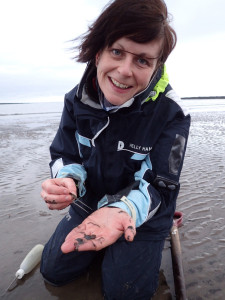
Collecting Magelona samples on my favourite sampling beach, Berwick-upon-Tweed, Northumberland. A beach known to many polychaetologists through the work of naturalist George Johnston.
Earlier this month we had a visit from Kate Mortimer from Amgueddfa Cymru – National Museum Wales. In her own words:
Magelonid polychaetes – Shovelhead worms
7th – 15th November
I have been specialising in the taxonomy of magelonid polychaetes for the last 15 years, particularly the investigation of species from Europe and the Indian Ocean. More recently I have been additionally studying the behaviour and functional morphology of this fascinating group.
Discussions with Jon Anders Kongsrud at the University Museum of Bergen (UMB) started at the International Polychaete Conference in Lecce 2010 about the MIWA-Project and the magelonid species off West Africa. I started work investigating the magelonid specimens from the MIWA-project back in 2013. Early investigation work suggested the possibility of up to 16 putative species from the samples, which potentially included several species new to science. So the work began, on the lengthy process of drawing, describing and imaging each individual species back at the National Museum Wales, in Cardiff.
- This animal is from Ghana
- Closer…closer..!
Whilst work continued looking at the morphology of these specimens it was decided that it would be prudent to come to the University Museum of Bergen to look at additional magelonid specimens from further MIWA samples, in order to select samples for DNA sequencing. The week would further cement morphological descriptions and to search for additional material of the rarer species within samples. So in November I took the trip to Bergen, leaving a wet and windy Cardiff behind and arriving in an equally wet and windy city!
After a week in the lab, over 100 vials of specimens and over 800 specimens have been studied. A further four potential species have been identified and the material is now ready for tissue sampling and photographing before the material is sent off to Canada for sequencing.
It has been a successful week, and I am very much looking forward to comparing the results from the sequencing to the morphology of these animals. Meanwhile back in Cardiff, we have selected specimens of similar British species for comparison to the West African material and Norwegian species.
Many thanks to all at the Museum for making me feel so welcome in Bergen. I very much look forward to collaborating with you on this project and look forward to some fascinating and interesting results from the project.


